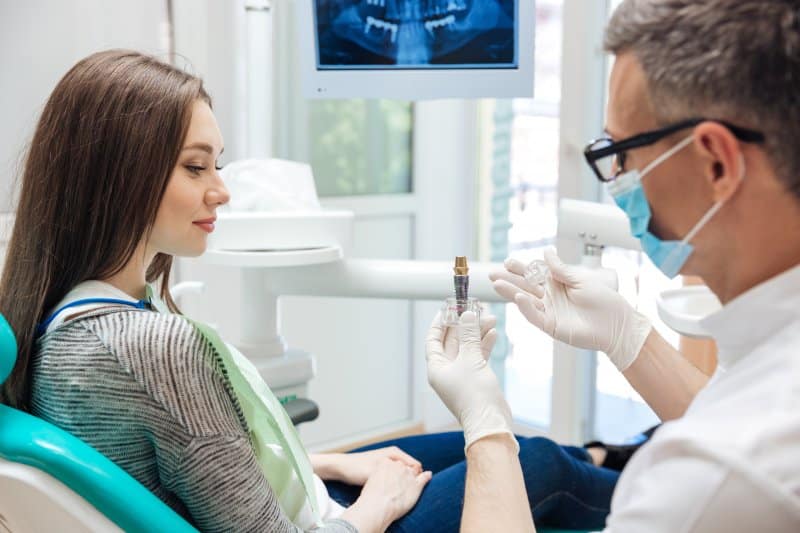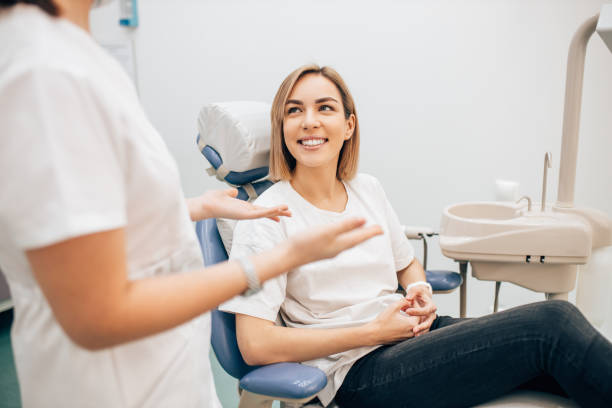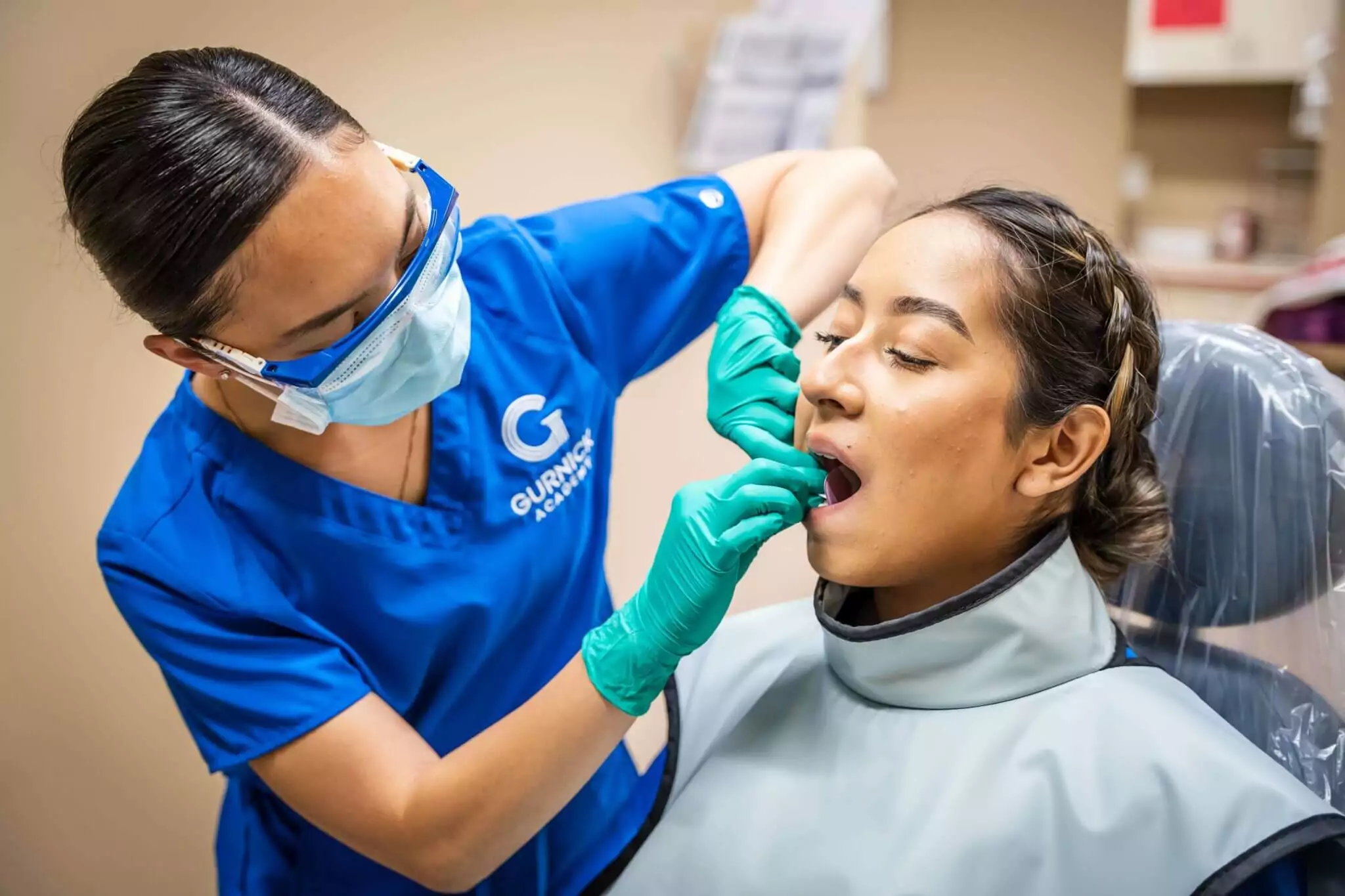Table of contents
Get Started with Kwikly
Get the latest updates, insights, and exclusive content delivered straight to your inbox.
Who This Is For
- Students exploring what a typical workday looks like before committing to dental hygiene school.
- New grads preparing to step into their first job and curious about daily routines and expectations.
- Career changers considering dental hygiene and wanting a realistic picture of the role.
- Anyone interested in understanding how dental hygienists contribute to patient health and the dental team.
Key Takeaways
- You start your day early, getting treatment rooms ready, cleaning instruments, and checking your patient list so everything runs smooth.
- Patient interaction is a central part of the job, as you educate, screen, clean, and help people improve their oral health.
- The role involves diverse job duties, including more than just cleaning teeth—such as radiograph interpretation, patient education, room maintenance, and assisting in procedures.
- You’ve got to keep learning and keep detailed records if you want to give great care and stay on top of new dental stuff.
Ever wonder what you actually do all day as a dental hygienist? This article breaks down the real tasks and responsibilities that fill your day, from setting up rooms to teaching patients about their teeth. If you're thinking about this career or just want to understand what makes your workday tick, here's the inside scoop on what being a dental hygienist is really like.
Getting Ready for Your Day
The morning routine for a dental hygienist starts well before your first patient arrives—usually at least thirty minutes early. This time is essential for organizing patient rooms, restocking supplies, and ensuring everything is ready for the day ahead. Here’s what you’re doing in those early morning minutes:
- Cleaning and sterilizing all your instruments
- Disinfecting cleaning equipment
- Restocking supplies
- Setting up your treatment rooms just right
- Organizing patient rooms based on the day's schedule
- Going through your schedule for the day
- Making sure all your equipment actually works so you don’t run into problems later
Organizing patient rooms and cleaning equipment helps dental hygienists prepare for a smooth and efficient workflow throughout the day.
Getting organized early helps you feel ready for whatever comes your way. You’ll check patient files and maybe chat with your team about who’s coming in and what they need. By the time patients arrive, everything is set up perfectly for the first patients, and your workspace feels professional and welcoming.

Checking Out Patients and First Looks
This is where your day really gets going - with patient screenings and those first quick assessments. These check-ups are huge for figuring out what’s happening in someone’s mouth and catching problems before they get worse. At the start of the appointment, you conduct patient interviews to gather information about concerns and symptoms. You’re doing things like:
- Looking around inside their mouth
- Spotting anything that looks off
- Checking for gum disease and other mouth issues
As part of the assessment, you review medical histories and the patient's oral history to personalize care and ensure safety. An initial diagnostic procedure, such as X-ray imaging, may be performed if needed to help with accurate diagnosis and treatment planning.
When you catch stuff early, you can fix it before it turns into a big deal.
You’re also teaching patients during these first meetings. Looking at their records and health history helps you figure out what each person needs. Making it personal during these screenings sets you up to give them really good care.
Daily Cleanings and Keeping Problems Away
Routine cleanings, also known as teeth cleaning or professional cleaning, are basically what you do most of the time. You use special cleaning tools to get rid of plaque and tartar that cause cavities and gum disease. The cleaning procedure usually includes polishing paste to make teeth smooth and shiny, so they look and feel clean. After scaling and polishing, the hygienist flosses between the patient's teeth to remove any remaining food particles and ensure a thorough clean, especially in hard-to-reach areas. Sometimes, teeth whitening is also offered as an additional service during a cleaning procedure to help remove stains and brighten the patient's smile. A good thorough cleaning keeps their mouth healthy.
Preventive care is super valuable, just like other medical stuff. Here’s what you’re doing to prevent problems:
- You give fluoride treatments to make tooth enamel stronger and cut down on cavities.
- Regular visits and professional cleanings are essential for keeping mouths healthy and stopping dental problems before they start.
- You provide preventive care procedures and dental treatment as part of your services.
- You teach people good oral habits.
- You give thorough cleanings so patients can keep their mouths healthy between visits, including any dental work they need.
These procedures help prevent dental issues such as decay and gum disease by addressing problems early and maintaining oral health.
But you’re not just cleaning teeth. You’re showing people how to brush and floss the right way, what foods are good or bad for their teeth, and how to take care of their mouth overall. Patient education is a key part of dental care and maintaining patients' teeth. This way, patients leave with clean teeth and know how to keep them that way.
Teaching Patients About Taking Care of Their Teeth
Teaching patients about oral hygiene takes up a big chunk of your day. Educating patients on how to properly care for their teeth and gums is essential to maintaining oral health and preventing dental issues. You focus on:
- Regular check-ups and cleanings to stop dental problems
- Preventing cavities and gum disease
- Giving personalized advice that fits each patient
- Showing proper brushing techniques
- Talking about food choices that affect their oral health
Oral health education is a key part of your role. You emphasize healthy oral habits during patient education, teaching patients the importance of daily practices like brushing and flossing to prevent developing dental conditions such as gum disease and cavities. By reinforcing healthy oral habits, you help patients maintain their oral health for the long term.
One cool technique is Guided Biofilm Therapy, which finds and manages dental biofilm to really improve oral hygiene. When you teach patients, you’re helping them take control of their oral health, which means better results down the road and fewer dental problems.

Midday Tasks and Working with Your Team
Your midday tasks go way beyond just patient care. Working with your team matters a lot, and those morning meetings help everyone get on the same page about schedules, coordinating patient appointments and hygiene appointments, special patient needs, and who’s doing what. During hygiene appointments and other patient appointments, you work closely with dental assistants and the dentist to make sure patients get great care. This teamwork is what makes everything run smoothly and keeps patients happy.
During lunch breaks, you catch up on office work like:
- Updating patient records
- Answering emails
- Checking tomorrow’s schedule and confirming appointments
- Sterilizing equipment and keeping it maintained so you’re ready for the next round of patients
Good teamwork and managing your tasks well are what make a dental practice successful.
Advanced Diagnostic Stuff
Advanced diagnostic procedures are a big part of what you do. A thorough clinical evaluation means examining the head, neck, and mouth, plus screening for cancer. You assess risks that might affect oral health, so you really understand what each patient needs. Based on these evaluations, you figure out if they need more diagnostics, like X-rays.
You often do these tasks:
- Take X-rays using digital equipment that captures detailed images in just a few minutes.
- Use these images to diagnose problems you can’t see during regular exams.
- Take impressions for implants, dentures, and other oral devices.
When taking X-rays, you use protective shields and follow safety protocols to minimize radiation exposure for patients.
These tasks play a big role in the diagnostic process and treatment planning.
Specialized Treatments and Procedures
Besides routine cleanings, you do specialized treatments and procedures, including:
- Administering fluoride treatments to strengthen tooth enamel and reduce cavity risk.
- Hygienist places sealants as a preventive measure to protect teeth from decay, especially for pediatric patients.
- Doing tooth scaling and root planing, which means cleaning under the gums and smoothing root surfaces to prevent plaque buildup and manage gum disease.
Providing preventive care for pediatric patients, such as applying sealants and administering fluoride treatments, is essential for cavity prevention and enamel protection. Delivering treatment is a key responsibility, ensuring that procedures are performed effectively while maintaining patient comfort and understanding. It is also important to follow the treatment plan developed with the dentist to monitor progress and coordinate care.
Advanced technologies like lasers make treatments more precise and help people recover faster. These specialized treatments prevent decay and support overall oral health, showing just how important you are in patient care. Your expertise makes sure patients get the best care possible.
Talking with Patients and Aftercare Instructions
Patient counseling and aftercare instructions are huge parts of your job. Before procedures, you help patients feel better, especially if they’re anxious about dental work, making the whole experience more comfortable. After treatments, you give specific guidelines for oral care to help healing and prevent complications. This might include advice on keeping their mouth clean and avoiding certain foods after treatment.
Delivering prompt treatment is essential, and providing prompt treatment during aftercare ensures that any issues are addressed quickly, supporting the patient's recovery. Aftercare instructions are also essential for maintaining the patient's oral health, helping to prevent future problems and promote overall dental wellness.
To make sure patients understand aftercare, you often use pictures or written instructions. You also schedule follow-up appointments and stay in touch with patients to make sure they’re getting continuous care. This complete approach to patient counseling helps with quick treatment and effective aftercare, making patients happier with better results.
Writing Everything Down and Keeping Records
Good documentation and record-keeping are essential for keeping care consistent. After your last patient leaves, you:
- Update records and think about how the day went
- Write down the patient’s oral history, treatment notes, and what you noticed during assessments
- Make sure each entry is dated, initialed, and accurately shows what treatment you provided
- Update the patient's dental health record to reflect all diagnostic and preventive procedures performed
Each hygiene appointment earns new entries in the patient's dental health record, helping to track oral health history and monitor treatment progress.
Regular checks of dental records make sure you’re following treatment plans and keeping accurate documentation. Detailed and accurate records help your dental team provide consistent and informed care for future appointments.
This attention to detail is crucial for running the dental practice smoothly and giving high-quality patient care.

Continuing Education and Growing Professionally
Continuing education keeps you up to date on new oral health practices and technologies. Platforms like the Colgate Oral Health Network offer over 200 free continuing education units, giving you chances to grow professionally. Webinars on different dental topics let you learn from recognized experts in real time, improving your skills and knowledge.
Getting ongoing education benefits you and makes you better at providing high-quality patient care. Group education sessions create community learning and awareness, supporting your dental team's efforts even more.
Using technology in dental practices helps educate patients about their oral health, making continuing education an essential part of your professional development.
Wrapping Up Your Day
As your day ends, you make sure these tasks are done to keep hygiene standards up and get ready for tomorrow:
- Properly clean and sterilize all instruments
- Sanitize dental chairs and common areas to make sure patients have a safe environment
- Check your supply inventory and restock what you need
- Restocking supplies in treatment areas to ensure clinic readiness
- Cleaning equipment and disinfecting dental tools between and after patient appointments
Make sure all patient rooms are organized, disinfected, and fully prepared for the next day.
Updating patient charts with what you found and planning for tomorrow’s appointments makes sure care continues. This careful end-of-day wrap-up makes sure everything’s ready for a smooth start the next morning, showing how dedicated and professional you are about maintaining high standards of patient care.
Summary
A typical day in dental hygiene involves a variety of tasks and responsibilities, from early morning prep to end-of-day cleanup. As a dental hygienist, you’re crucial for keeping patients’ oral health on track through routine cleanings, advanced diagnostic procedures, patient education, and specialized treatments. Dental hygiene encompasses all these duties, focusing on preventive care, promoting healthy oral habits, and providing personalized recommendations. You play a vital role on the dental team, making sure patients get comprehensive and high-quality care. Your dedication and expertise give people confidence and lead to better oral health outcomes for everyone.
Frequently Asked Questions
What time do dental hygienists start their day?
You typically start your day by showing up at least half an hour before your first appointment to get properly prepared. This gives you time to set up your workspace and review patient information effectively.
What are some of the initial assessments a dental hygienist performs?
You do initial screenings by examining the mouth and noting any problems, which helps catch issues like cavities and gum disease early. This proactive approach is crucial for keeping oral health on track.
What advanced diagnostic procedures do dental hygienists perform?
You do advanced diagnostic procedures like thorough clinical evaluations, cancer screenings, and X-rays, helping you identify issues that might not be visible during routine exams. This comprehensive approach makes patient care better and ensures you catch potential problems early.
How do dental hygienists educate patients about oral hygiene?
You educate patients about oral hygiene by giving personalized recommendations on effective brushing techniques, food choices, and why regular dental check-ups matter for preventing issues. This complete approach helps people develop better oral health habits.
What specialized treatments do dental hygienists administer?
You give specialized treatments including fluoride applications, dental sealants, and tooth scaling and root planing to prevent decay and manage gum disease effectively. These services are essential for keeping oral health optimal.








